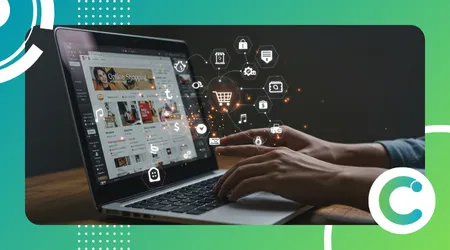Social Media Shopping!
Advertisements
Social networks, once platforms for connection and entertainment, have transformed into true digital marketplaces.
Social media shopping are not just a passing trend, but a revolution in consumer economic behavior, redefining how people discover, evaluate and purchase products.
This phenomenon, driven by the integration of technology and interactivity, is shaping new consumer habits, influencing financial decisions and challenging traditional commerce structures.
But how exactly are these platforms rewriting the rules of the economic game?
Continue reading and find out all about it!
Social Media Shopping

The rise of social media shopping reflects the convergence of convenience, personalization, and immediacy.
Platforms like Instagram, TikTok, and Pinterest don't just showcase products, they create immersive experiences that capture attention and drive action.
++ Simple Finance: Tips That Work Even for People Who Hate Numbers
Unlike physical stores or even traditional e-commerce, social media integrates storytelling, social influence, and technology to create an environment where the desire to buy is instantaneous.
Why wait to search for a product on another website when you can click it directly from a post?
This rhetorical question captures the essence of a behavior that values speed and integration.
++ How to Create a Financial Routine Without Getting Stuck on the App
This text explores how shopping on social networks are changing consumer economic behavior, analyzing everything from psychological triggers to macroeconomic implications.
The Psychology Behind Social Media Shopping

To the shopping on social networks explore psychological triggers that make the act of buying almost instinctive.
The dopamine released by watching a captivating TikTok video or seeing a recommendation from an influencer creates an emotional connection with the product before the consumer even considers their actual need.
++ The Invisible Costs That Break Small Businesses
This dynamic is amplified by the concept of social proof: when thousands of people like or comment on an item, the consumer feels an implicit validation of its quality.
Thus, social networks transform desire into action with unprecedented speed.
Furthermore, algorithmic personalization plays a crucial role.
Platforms like Instagram use behavioral data to display hyper-targeted ads, creating the illusion that the product was “made” for the user.
For example, imagine a young professional named Ana, who frequently likes posts about sustainable fashion.
While scrolling through her feed, she comes across an ad for an eco-friendly bag, promoted by an influencer she follows.
The combination of authentic storytelling and targeting makes Ana click the “Buy Now” button without hesitation.
This scenario illustrates how social media converts interests into purchases with almost surgical precision.
Finally, the gamification of consumption is also a determining factor.
Features like “Shop Now” or countdowns for promotions create a sense of urgency, exploiting the fear of missing out (FOMO).
Unlike traditional retail, where consumers have time to reflect, social media accelerates the decision-making process, reducing the barrier between desire and purchase.
This subtle yet effective manipulation is redefining how consumers perceive value and need.
Economic Impacts on Consumer Behavior

To the shopping on social networks are reshaping the economy by altering capital flows and consumption patterns.
A recent study by Statista revealed that by 2024, global sales via social media will reach US$1.2 trillion, representing approximately US$10.3 trillion of total global e-commerce.
This statistic underscores the massive impact of these platforms, which channel billions of dollars directly from consumers to brands, often without traditional intermediaries like physical stores.
This shift in capital is redefining supply chains and marketing strategies.
Furthermore, social networks have democratized access to the market.
Small brands, like the fictional “Luz Natural,” a handmade candle company, can reach millions of consumers without the high costs of traditional advertising.
Through a viral TikTok video, the company managed to triple its sales in one month, using only low-cost paid ads and partnerships with micro-influencers.
This example demonstrates how social media levels the playing field, allowing small businesses to compete with retail giants.
However, this new model also has less positive implications.
Impulsive consumption, encouraged by the ease of purchasing, can lead to increasing debt among young consumers, who often buy without planning.
Furthermore, reliance on algorithms for purchasing decisions raises ethical questions about manipulation and privacy.
So, while the shopping on social networks boost the economy, they also create challenges that require greater financial awareness on the part of consumers.
The Analogy of the Digital Market as a Global Bazaar

Imagine social media as a global bazaar, where every profile is a vibrant stall, displaying unique products under the flashing lights of stories and reels.
In this bazaar, sellers (brands and influencers) know their customers by name, understand their tastes, and anticipate their needs.
Unlike a traditional market, where you stroll and choose at your leisure, this bazaar is designed to capture your attention immediately, with colors, sounds, and promotions that scream "buy now!"
To the shopping on social networks are therefore a sensory and emotional experience, not just a transaction.
In this bazaar, interaction is constant.
Consumers not only buy, but also chat with sellers through comments, direct messages, and live streams.
This closeness creates a sense of trust, as if the salesperson were a friend recommending a product.
For example, when a fitness influencer promotes a dietary supplement in a livestream, answering questions in real time, the consumer feels like they're making an informed decision, even if they're influenced.
This dynamic transforms the act of shopping into a community experience.
However, just like in a crowded bazaar, there are risks of distraction and hasty choices.
The abundance of options and the pressure to act quickly can lead to unnecessary purchases.
Thus, the digital bazaar of social media is both an opportunity and a challenge, requiring consumers to navigate with discernment to avoid emotional and financial pitfalls.
The Role of Platforms and Their Strategies

Social media platforms are not just facilitators; they are architects of consumer behavior.
Features like Instagram Shopping, TikTok Shop, and Pinterest Buyable Pins integrate the purchasing process directly into the feed, eliminating the need to redirect users to another website.
This integration reduces friction and increases conversion rates, as the consumer remains immersed in the platform environment.
Consequently, companies invest heavily in native ads, which blend seamlessly with organic content.
Additionally, partnerships with influencers are a core strategy.
Unlike traditional advertising, which can feel intrusive, influencers create authentic narratives that resonate with their followers.
For example, a vegan cosmetics brand called “Viva Verde” collaborated with a beauty influencer to create makeup tutorials on Instagram.
Each carefully edited video included direct links to the products, resulting in a 40% increase in sales within two weeks.
This case exemplifies how social media transforms influence into purchasing power.
On the other hand, platforms also face regulatory challenges.
Collecting data for personalization raises privacy concerns, while the spread of counterfeit or low-quality products can undermine consumer trust.
Therefore, social networks need to balance innovation with responsibility, ensuring that shopping on social networks are safe and reliable.
Frequently Asked Questions about Shopping on Social Media
| Question | Response |
|---|---|
| Is it safe to buy directly from social media? | Yes, as long as the purchase is made through trusted platforms like Instagram Shopping or TikTok Shop, which offer consumer protection. Always check the store's reputation and read reviews before purchasing. |
| How to avoid impulsive purchases? | Set a monthly budget for online purchases and consider your actual need for the product before clicking "Buy Now." Financial management tools can help. |
| Are social media promotions reliable? | Not always. Be wary of steep discounts and verify the store's legitimacy. Genuine promotions usually come from established brands with good reviews. |
| How to identify counterfeit products? | Research the seller, read reviews from other buyers, and avoid suspicious links. Reliable platforms usually have anti-counterfeiting policies. |
| Which platforms are most used for shopping? | Instagram, TikTok, and Pinterest lead the way, with features like Instagram Shopping and TikTok Shop. Each offers a unique experience tailored to different audiences. |
The Future of Social Media Shopping
The future of shopping on social networks promises to be even more integrated and immersive.
Technologies like augmented reality (AR) are allowing consumers to virtually “try on” products, like glasses or clothing, directly from their cell phones.
This innovation reduces the uncertainty of online shopping and increases consumer confidence.
Additionally, the integration of artificial intelligence is refining personalization, predicting desires before the consumer even expresses them.
Another aspect is the rise of live commerce, especially popular in Asia and growing in the West.
Livestreams combine entertainment, interaction, and shopping, creating an experience that blends the dynamism of an auction with the accessibility of a shopping mall.
This format not only drives sales, but also strengthens the connection between brands and consumers, promoting loyalty.
Finally, the economic impact of shopping on social networks will continue to grow, but will require adaptations.
Consumers will need to develop greater financial literacy to avoid impulsive spending traps, while brands and platforms will face pressure to ensure transparency and sustainability.
Thus, the future of this phenomenon will depend on a balance between technological innovation and ethical responsibility, ensuring that the digital bazaar remains vibrant but safe.
